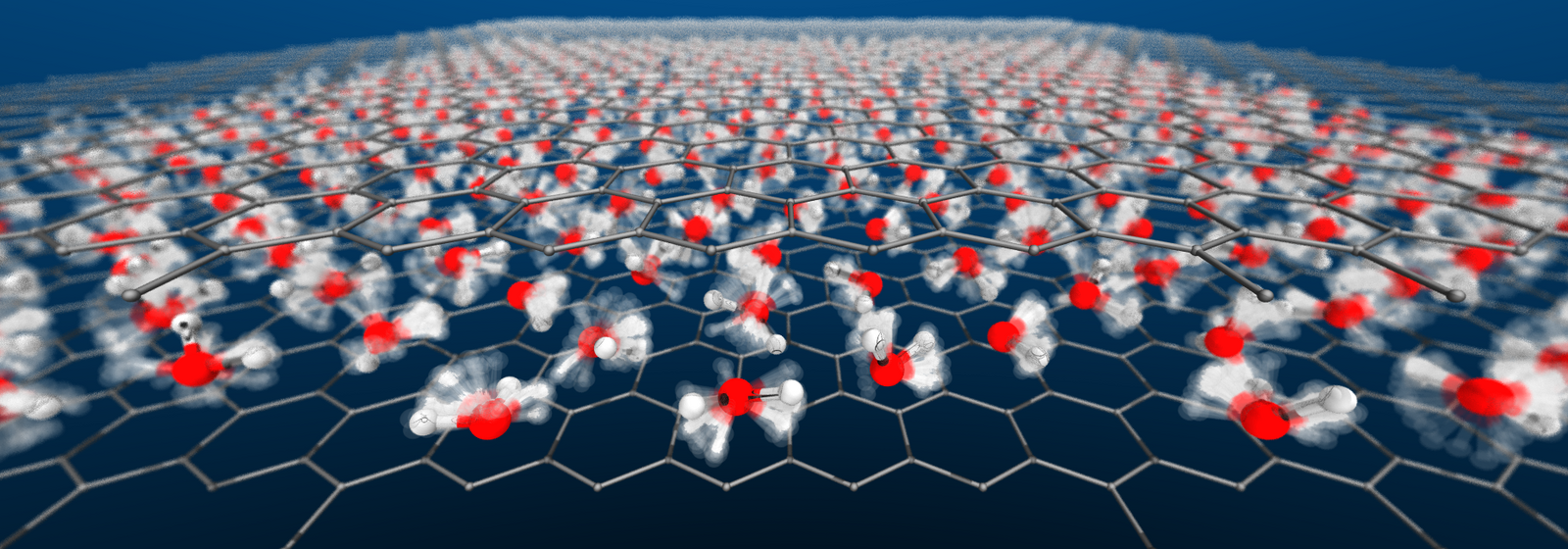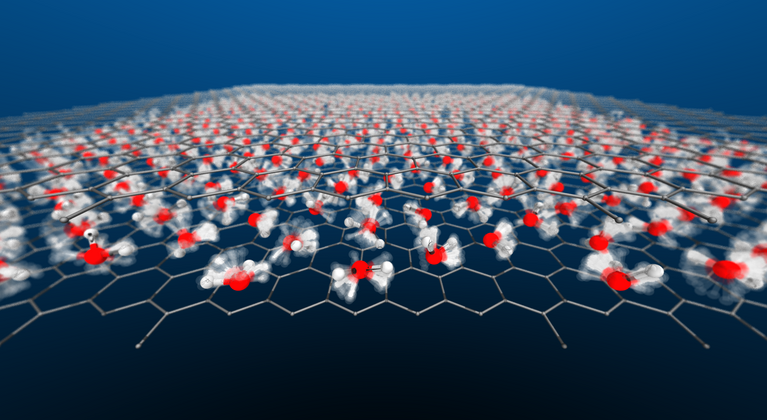September 30, 2022 - by Simone Ulmer
Research infrastructures, such as the supercomputer "Piz Daint" or its successor "Alps", are essential tools in the search for new materials. These materials are useful, for example, in producing improved solar cells, clean fuels, durable batteries, novel drug compounds or tiny electronic components. The high-performance of these supercomputers is utilized in narrowing down the search for promising material compounds.
However, the so-called ab initio calculations are time-consuming and computationally intensive because the calculations require a high degree of accuracy. The computers must use specific codes and algorithms to solve quantum mechanical equations for determining the structure of the electrons and their energy state for each position of the ion. Therefore, even with the increasingly powerful high-performance computers, it has only been possible to simulate a material with 100 atoms, rarely with 1000 atoms, over experimental timescales.
To tackle this problem, researchers have spent two decades testing techniques from artificial intelligence and quantum-mechanics to make such calculations faster, more accurate, and less expensive. Now, with so-called machine learning potentials (MLPs), researchers can finally hope to realistically simulate up to tens of thousands of molecules. Scientists at the University of Cambridge, United Kingdom, have recently succeeded in developing an approach that uses these MLPs in combination with quantum-mechanical simulations to include the fuzziness of quantum-mechanical motion of atoms.
A central problem in simulating materials and their properties is predicting their stability. "Luckily, there exists a quantity called the ‘free energy’, which is a direct probe of the stability of a material," says Venkat Kapil, Oppenheimer Research Fellow University of Cambridge and the principal investigator of the study. The researchers have now shown that their approach is able to reproduce and simulate these relative free energies (or stabilities) of a variety of molecular crystals in agreement with known experimental results. More recently, they have even used this approach to predict the full phase diagram and properties of monolayer water confined in nanometre-sized graphene-like nanochannels. The studies were published in the Proceedings of the National Academy of Sciences (PNAS) and in the Nature journal.
Facilitating the search for new materials
Kapil and his colleague Edgar Engel, Junior Research Fellow, first wanted to assess their approach on the calculation of stable polymorphic crystals — a chemically identical substance that can, however, have different crystal structures and properties — which combines the calculation of the quantum mechanical stabilities of the respective crystal with MLPs. For this purpose, they used experimentally determined crystal structures of benzene, glycine, and succinic acid, and then they proposed a straightforward way to automate the development of these MLPs for general molecular crystals. According to the researchers, the resulting MLPs are able to generalize across other potentially stable crystal structures.
"Molecular modelling using the new approach leads to an excellent agreement with the experimental results," says Kapil. He and Engel believe that the search for thermodynamically stable materials of importance to industry, whether for making drugs or solar panels, will be facilitated by their new method. "We are very excited about these results, as it shows that rigorously including all physical effects in simulations — but only at a small computational effect thanks to machine learning — is sufficient to reproduce experimental results at a high level of accuracy," Kapil adds. The researchers are convinced that their protocol will be especially useful in predicting properties of materials in conditions where experiments are difficult or impossible.
On the trail of water’s secrets
In a recent study published in Nature, Kapil and his colleagues focused on the properties of water at the nanometre scale. Water, after all, is what makes life possible, as well as many important chemical and physical processes in living organisms on and in the earth. Nonetheless, the element of water is still not fully understood. When tiny quantities of monolayer water molecules are trapped in nanometre-sized graphene-like tubes, so-called van der Waals forces acting between the atom and the molecule play a major role. These forces impose lateral pressure on the enclosed water. The magnitude of the van der Waals forces and the shape and the mechanical behaviour of the graphene tube both influence the structure of the monolayer water, i.e. which two-dimensional arrangements of the hydrogen bonds are formed. The arrangement of the hydrogen bonds in turn dictates the properties of the monolayer water. Since these structures are difficult to determine and characterize in experiments and since realistic simulations are cost-intensive, the researchers also used MLPs to obtain a phase diagram of monolayer water in a pressure range of 0.01 to 4 gigapascals and a temperature range of 0 to 600 Kelvin.
In a first step, they used the so-called quantum Monte Carlo method (QMC), one of the most accurate first-principles methods for simulating molecular structures. They then determined the most appropriate density functional theory (DFT) function to describe the energetic state of the system under study, which they then trained and validated using an MLP method developed in the research group of Angelos Michaelides.
New phase of water detected
According to the researchers, the phase diagram obtained in this way shows that monolayer water exhibits a surprisingly rich and diverse phase behaviour that depends strongly on temperature and van der Waals pressure in the nanochannel. Among other things, they found evidence that there should be a hexatic phase that lies between a solid and a liquid, as well as a superionic phase with a high electrical conductivity. This conductivity, the researchers say, should exceed that of batteries by up to a factor of 1,000. "Up to now, the superionic phase of water is seen as an exotic phase of water only found in extreme conditions, like the interior of planets. But the stability of superionic water at easily accessible conditions in confinement means that we can perhaps think of it as a technologically useful material in future," Kapil says.
References:
- Kapil V & Engel EA: A complete description of thermodynamic stabilities of molecular crystals, PNAS 119, 6, (2022), https://doi.org/10.1073/pnas.2111769119
- Kapil V, Schran C, Zen A et al.: The first-principles phase diagram of monolayer nanoconfined water, Nature 609, 512–516 (2022), https://doi.org/10.1038/s41586-022-05036-x
This article may be used on other media and online portals provided the copyright conditions are observed.

